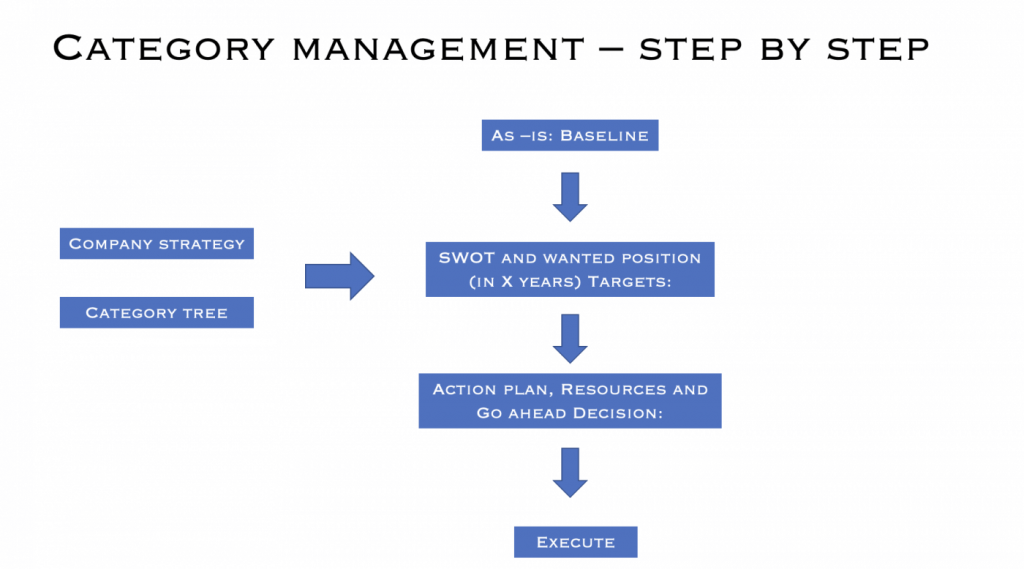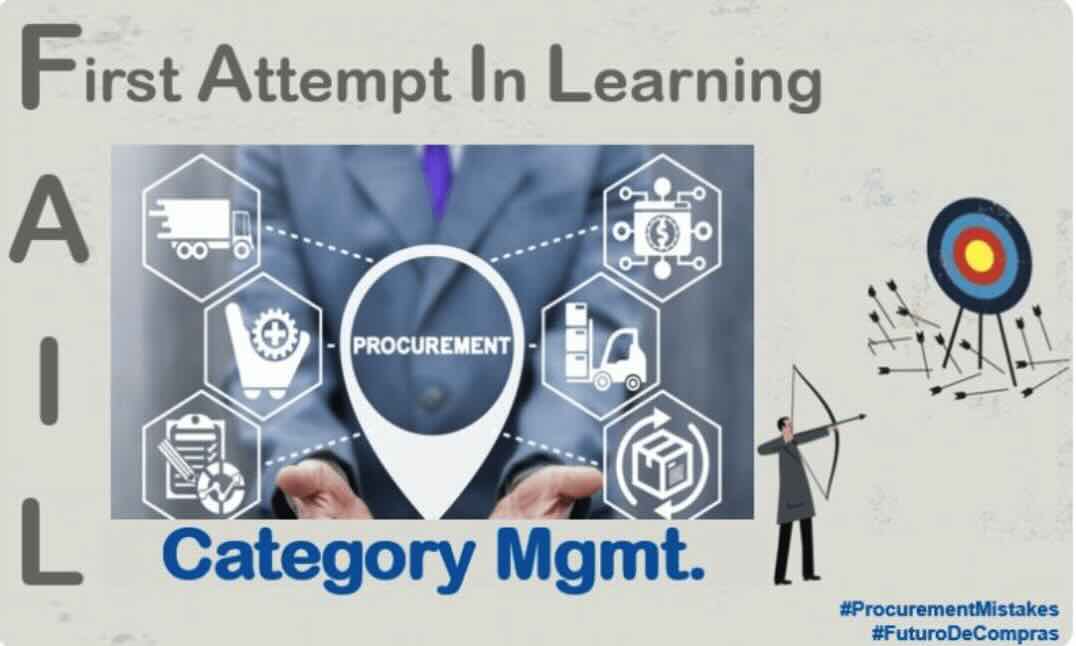I started in Procurement right after university. I began to practice Category Management quite many years later in Indirect Procurement in the Automotive industry. Since 2010, I have been teaching Category Management and guided hundreds of Category Mgrs. I had the opportunity to learn about so many amazing categories…..but I never forget how I failed at Category Management.
Content..
First Attempt In Learning
There are several common pitfalls in Category Management:
- Wrong understanding of the methodology; incorrect definition of what a category strategy means; confusion with Strategic Sourcing Process.
- Prioritize short-term savings and/or contract renegotiation.
- Study a ‘macro’ category, instead of selecting the right sub-category level (with clear needs and a defined supply market).
- Assume stakeholders only provide requirements.
- Be obsessed by internal spend transparency.
Fortunately, simple measures can improve outcomes.
We can:
- Start the process by building a working team and a category council. It is a collaborative exercise.
- Focus on the strategic & future needs or challenges of the business. This is not a requirement gathering exercise.
- Research well the defined supply market & key suppliers incl. trends in sustainability & digital. It also includes the identification of key risks.
- Pick the most significant top 3-to-5 components for your strategy (choosing from: savings, cash, buying channels & tail spend mgmt., supplier panel & strategy, risk mitigation, ESG, digital, innovation, time-to-market, stakeholder engagement )
- Define & implement a list of initiatives based on all Proc. levers (Supply/Mgmt., Process Mgmt., Demand Mgmt., Value Mgmt.). By the way, not all strategic actions are savings related.
- Often, one of the first initiatives is a Strategic Sourcing Process
I failed at Category Management…my hints:
- Less is more: focus on the few most relevant sub-categories; a strong Strategic Sourcing Process is sufficient for the rest.
- Instead of following a sequential 5-step approach, start from the end, from the outcome. Think about your Category Canvas first and go backwards.
- Analyze the price structure, much better the costs and associated key cost drivers. TCO analysis is fantastic. Spend time on demand mgmt. & overall value from third party spend.
- Define a long term bold vision supporting the business. State the corresponding medium / short term strategic objectives. It’s all about buying ➖ to achieve ➕ or sell ➕ .
- Category Mgmt. requires strong governance mechanisms & robust change mgmt.
#Procurement #Purchasing #Futurodecompras #Procurementbluesky
Contact Stéphane Morel at LinkedIn
Three opportunities to learn more about Category Management
Stéphane Morel say “I failed at Category Management” but you do not have to fail. Expand your knowledge with help from Learn How to Source’s (LHTS) courses
If you want to learn the basic concept of Category Management
Procurement category management is a strategic approach to procurement that involves analyzing spend data, identifying categories of goods and services, and developing a plan to manage those categories. This approach helps organizations optimize their procurement process, improve supplier relationships, and achieve cost savings. In addition to cost savings and process improvement, procurement category management can help organizations mitigate risks, improve compliance, and enhance their sustainability and social responsibility practices.
By implementing effective procurement category management practices, organizations can achieve their procurement objectives and support their broader business goals. In the course Category Management by EFFSO you will learn importance of understanding the concept of Category Management. After this course you will be able to describe Category Management, define a Category and explain some best practices in Category Management.

If you want to learn how to get started with Category Management
Welcome to Learn How to Source’s advanced course on Procurement Category Management, a course designed for procurement professionals seeking to deepen their expertise in the strategic approach to procurement known as Category Management. This course is tailored to equip you with the essential skills and knowledge needed to initiate and implement Category Management in a category.
If you are a procurement manager and want to understand what questions your category strategies can drive
As businesses grow and evolve, the pivotal role of procurement becomes increasingly apparent. The seamless integration of strategies, tools, and people is essential to achieve operational excellence in procurement. This course will guide you through the intricate landscape of procurement, delving deep into its three foundational perspectives: Category Management, PMT (Processes, Methods, and Workflows), and Organization & Roles.
Whether you are a seasoned procurement professional seeking to refine your expertise or a novice eager to grasp the fundamentals, The Introduction to Procurement Management promises a comprehensive exploration of how strategic objectives shape and influence procurement decisions. By the end of this course, you will be equipped with the basic knowledge on managing companies procurement functions towards success and strategic alignment.
Hope you have found some tips in the post “I failed at Category Management”. Follow Stéphane Morel at LinkedIn and continue to learn from his experience.
About Learn How to Source
Learn How to Source (LHTS) is an online platform based in Sweden, offering a range of procurement courses accessible globally. It serves as a community where procurement experts share their knowledge through online courses, designed for various experience levels from introductory to expert. Courses are concise, about 30 minutes each, and cover different aspects of procurement, tailored for different buyer roles. The courses focus on practical knowledge, presented by seasoned professionals, and include quizzes and certificates. They can be accessed from any device, emphasizing micro learning for flexibility and efficiency.
Note: Illustration to the blogpost “I failed at Category Management” was provided by Stéphane Morel
